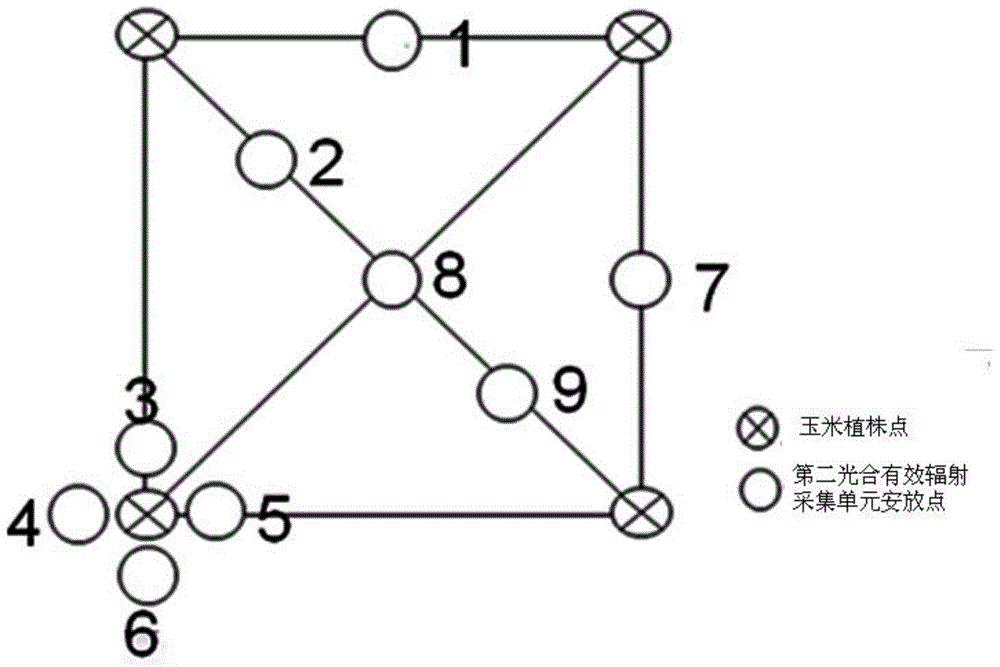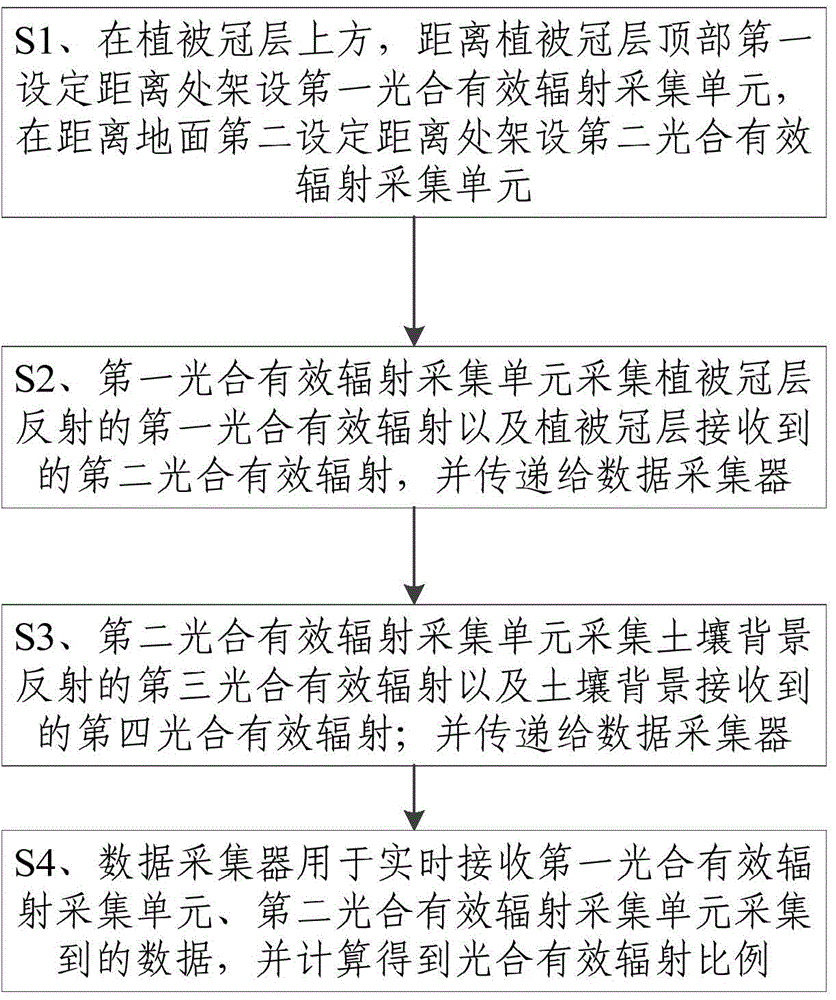System and method for observing plant canopy photosynthetically active radiation absorptivity
A photosynthetically active radiation and vegetation canopy technology, which is applied in the field of observation systems for the photosynthetically active radiation absorption ratio of the vegetation canopy, can solve problems such as low accuracy, complex calculation process, and difficulty in parameter acquisition, and achieves cost reduction, continuous Observation, easy to use effect
- Summary
- Abstract
- Description
- Claims
- Application Information
AI Technical Summary
Problems solved by technology
Method used
Image
Examples
Embodiment Construction
[0037] The present invention will be described in further detail below in conjunction with the accompanying drawings and embodiments. The following examples are used to illustrate the present invention, but should not be used to limit the scope of the present invention.
[0038] An observation system for the absorption ratio of photosynthetically active radiation by vegetation canopy, comprising a first photosynthetically active radiation collection unit located above the vegetation canopy and at a first set distance from the top of the vegetation canopy; a second unit with a second set distance from the ground A photosynthetically active radiation collection unit; a data collector that receives the data collected by the first photosynthetically active radiation collection unit and the second photosynthetically active radiation collection unit; the first photosynthetically active radiation collection unit is used to collect the first photosynthetically active radiation The pho...
PUM
 Login to View More
Login to View More Abstract
Description
Claims
Application Information
 Login to View More
Login to View More - R&D
- Intellectual Property
- Life Sciences
- Materials
- Tech Scout
- Unparalleled Data Quality
- Higher Quality Content
- 60% Fewer Hallucinations
Browse by: Latest US Patents, China's latest patents, Technical Efficacy Thesaurus, Application Domain, Technology Topic, Popular Technical Reports.
© 2025 PatSnap. All rights reserved.Legal|Privacy policy|Modern Slavery Act Transparency Statement|Sitemap|About US| Contact US: help@patsnap.com



